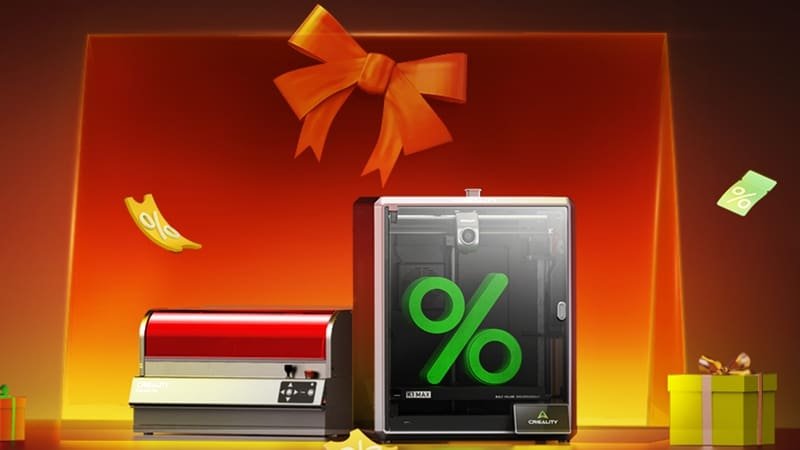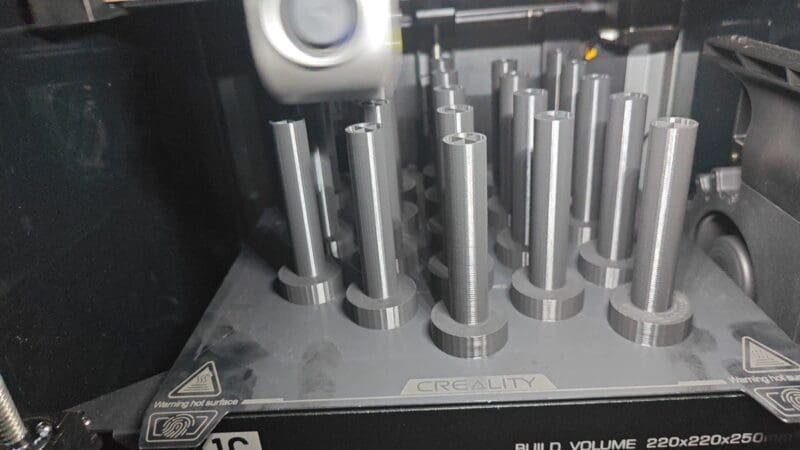How to Load Filament into Ender 3?

Introduction
3D printing has grown in popularity among DIYers and small enterprises. It’s a revolutionary technology that allows people to use a 3D printer to design and create their own products. However, before 3D printing can begin, the filament must be loaded into the printer. Loading the filament into the Ender 3 can be difficult for novices who are unfamiliar with the process. In this tutorial, we’ll go over how to load filament into the Ender 3.
Preparation before Feeding the Filament
Before feeding the filament into Ender 3, we must ensure that the printer is ready for operation. The first thing we should do is double-check the type and diameter of the filament we’ll be utilizing. It’s critical to choose the right filament type and diameter for your printer’s extruder assembly. This information can be found on the filament spool. The Ender 3 works with PLA, ABS, PETG, and other filaments with diameters ranging from 1.75mm to 3mm.
The nozzle and bed must then be heated to the correct temperature for the filament. The temperature will differ depending on the type of filament and the manufacturer. However, 210°C for PLA and 240°C for ABS is a good starting point. Depending on the filament type, the bed temperature ranges from 60°C to 80°C.
It is also critical to ensure that the extruder component is clean and free of debris that may have accumulated from prior printing. A filthy extruder assembly can cause jams, under-extrusion, and even nozzle clogging.
How to Load Filament into Ender 3
Step 1: Trim the Filament
Begin by cutting the filament to the desired length, which is usually between 15 and 20 centimeters. It’s also a good idea to trim the tip of the filament at a 45-degree angle so that it may be easily introduced into the extruder assembly. Cutting the filament tip appropriately allows it to be fed into the extruder without causing any problems.
Step 2: Place the Filament in the Extruder Assembly
Locate the filament entrance before inserting the filament into the extruder assembly. A little hole near the extruder motor serves as the filament inlet. Once you’ve located the filament entrance, remove the tension by pressing the lever on the extruder assembly. This will make it easier to insert the filament into the extruder.
Insert the filament into the extruder assembly while holding it stable. Push it all the way in until it reaches the extruder gear. Because entering the filament at an angle can cause jams in the printer’s nozzle, it must be straight.
Step 3: Inserting the Filament Into the Nozzle
After inserting the filament into the extruder assembly, begin feeding it through the nozzle. To accomplish this, we must activate the printer’s “Load Filament” function. This is accomplished by going to the printer’s menu and selecting “Prepare,” then “Preheat PLA,” or whatever filament type you are using.
The filament will begin to feed through the extruder gear as the printer heats up. This can happen automatically, or we may have to manually move the filament to assist it to reach the nozzle. When the filament begins to emerge from the nozzle, the “Load Filament” feature should be disabled.
Step 4: Adjusting the Extruder Assembly Tension
It is critical to ensure that the filament is properly fed through the nozzle during the feeding process. If the filament is not correctly fed through the nozzle, the tension on the extruder assembly may need to be adjusted. We can modify the tension on the extruder assembly by tightening or loosening the adjustment screw situated near the extruder motor. If the printer is under-extruding the filament, we need to adjust the extruder assembly tension. If the printer is over-extruding, we need to tighten the extruder assembly tension.
Step 5: Printing a Demonstration Object
It’s time to print a test object now that the filament has been loaded. Printing a test object will assist us in ensuring that the filament is properly loaded and that the printer is operational. Check that the printer is not under or over-extruding the filament when printing. If the printer isn’t printing properly, we might need to modify the tension on the extruder assembly or make other changes to the printer’s settings.
Troubleshooting steps
1) Filament Jams: When the printer’s filament becomes jammed, the printer will cease working. A misplaced filament or a clogged nozzle can both create a jam. Turn off the printer and wait for the nozzle and extruder assembly to cool before attempting to clear the jam. Following that, we may take the filament from the extruder assembly and manually clean the nozzle of any debris. We can try feeding the filament through the extruder again after the nozzle has been cleared.
2) Under-Extrusion: A loose tension on the extruder assembly is frequently the cause of under-extrusion. To correct this, tighten the adjustment screw on the extruder assembly. We should also inspect the nozzle for cleanliness and dirt.
3) Extrusion: Extrusion results in a large amount of filament exiting the nozzle. Too much stress on the extruder assembly can cause this. To correct this, we must loosen the extruder assembly’s adjustment screw.
Conclusion
3D printing is a fantastic technology that may be utilized for a variety of reasons. Loading filament into the Ender 3 might be tricky for new users, but following the steps and instructions above, it is a simple process. Always check the filament type and diameter before loading it, heat up the nozzle and bed, and clean the extruder equipment. If problems emerge during the procedure, don’t be afraid to use the suggestions above to troubleshoot. Successful filament loading and printing may be accomplished with adequate preparation and attention to detail. Have some fun printing!
FAQ
1. What sorts of filaments can be used in Ender 3?
The Ender 3 is compatible with PLA, ABS, PETG, and other filaments with diameters ranging from 1.75mm to 3mm.
2. How do I get the Ender 3 ready for filament loading?
Before adding the filament, double-check the filament type and diameter, heat up the nozzle and bed, and clean the extruder assembly.
3. How should I prepare the filament for insertion?
To make insertion easier, cut the filament to an acceptable length (typically around 15-20 centimeters) and cut the tip of the filament at a 45-degree angle.
4. Where do I place the filament in Ender 3?
Insert the filament into the extruder assembly by locating the filament intake and releasing the tension with the lever.
5. How do I insert the filament into the nozzle?
After adding the filament to the extruder assembly, turn on the printer’s “Load Filament” function, and the filament will begin feeding through the extruder gear. Stop the “Load Filament” function once it starts coming out of the nozzle.
6. What should I do if the filament is not correctly passing through the nozzle?
Adjust the tension on the extruder assembly using the adjustment screw found near the extruder motor if the filament is not feeding properly through the nozzle.
7. Is it possible to manually feed the filament?
Yes, the filament can be manually fed through the extruder assembly if necessary by turning the extruder motor or pushing the filament manually.
8. What should I do if the filament becomes stuck?
If the filament becomes stuck, turn off the printer and wait for the nozzle and extruder assembly to cool. Once the filament has cooled, remove it from the extruder assembly and manually clear any debris from the nozzle.
9. What exactly is under-extrusion?
Under-extrusion happens when the printer does not use enough filament to produce the object, leaving gaps in the print. A loose tension on the extruder assembly can cause this.
10. What exactly is over-extrusion?
Over-extrusion happens when the printer uses too much filament to produce the object, causing the filament to overflow from the nozzle. Too much stress on the extruder assembly can cause this.
DISCLOSURE: THIS POST MAY CONTAIN AFFILIATE LINKS, MEANING I GET A COMMISSION IF you DECIDE TO MAKE A PURCHASE THROUGH MY LINKS, AT NO COST TO YOU. PLEASE READ MY DISCLOSURE FOR MORE INFO.



